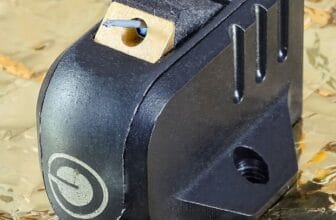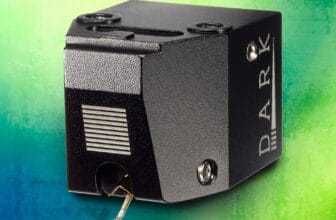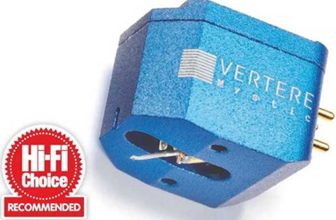Shelter Harmony Review
According to the dictionary placed at my elbow, the definition of ‘harmony’ is ‘the process by which individual sounds are joined together or composed into whole units or compositions’. That, and the obvious association with the world of music, probably explains why it’s appeared in the name of more than a few domestic and pro-audio brands and products over the years. This particular celebration of ‘Harmony’ comes in the form of Shelter’s flagship moving-coil cartridge which, at £ is far from the costliest pick-up on the high-end scene. Read our Shelter Harmony Review.
Review: Adam Smith
Lab: Paul Miller
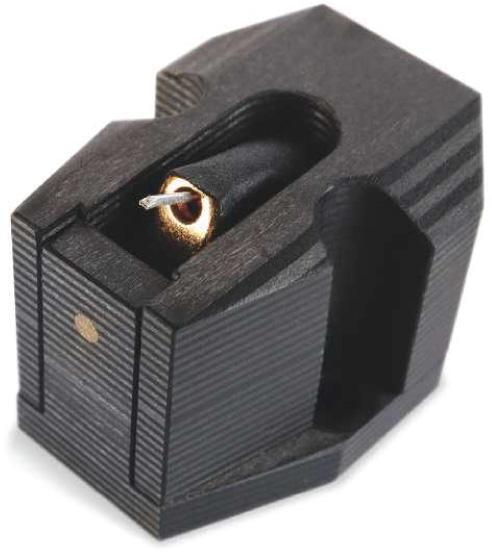
AUDIO FILE
Medium output moving-coil pick-up cartridge
Made by: Shelter Inc., Ibaraki, Japan
Supplied by: Padood Ltd, Cambridge, UK
Telephone: 01223 653199
Web: www.shelter-audio.co.jp; www.padood.com
Price: £
As one of Japan’s most well-known boutique cartridge manufacturers, Shelter names its MCs with as much care as it selects its diamonds, body shells and mechanisms. Indeed, even the brand name was coined by founder Yasuo Ozawa with the intention that his products would provide a sense of ‘analogue shelter’ for music lovers…
PICK-UP SIX-PACK
Now an established marque, Shelter has been producing cartridges since 1986. Ozawa began his career making valve amplifiers but joined arm/cartridge specialist Fidelity Research in 1982, found himself drawn to analogue, and became heavily involved in the company’s MCX-3 and MCX-5 moving-coil pick-up designs. Four years later he left to set up Shelter.
Over a history spanning more than 35 years, Ozawa’s company has avoided introducing a wide variety of models to cover every niche – its first product, the moving-coil 701, lasted for over 12 years, being only lightly tweaked along the way.
Shelter’s current cartridge lineup comprises six designs, spread over two distinct ranges. First up is the ‘Legendary Line’, starting with the 201 MM at £ and moving up through the MC options – 301II, 501II, 501II Mono and 901II. At the top of the tree is the ‘Ultimate Line’, which now consists of only the Harmony, as the earlier Accord model has been discontinued. The product portfolio is completed by the 1011 and 1011L headshells, plus the 411 Type 2 MC step-up transformer.
The Harmony MC looks – and feels – a little different to most cartridges thanks to the material used in its body construction. CFRP (Carbon Fibre Reinforced Polymer) is a composite with an extremely high strength to weight ratio, and is used extensively in ship building, sports equipment and aerospace applications, including a good portion of the Boeing 787 Dreamliner.
SHAPE SHIFTER
For the Harmony’s body, the CFRP is laid down in layers and moulded into shape. It’s this combination of body shape and laminated CFRP material that helps shift any inherent structural resonances up to higher frequencies, while its self-damping and isolation properties further isolate the pick-up’s delicate motor unit from outside influences. This, so the theory goes, should result in minimal colouration of the signal, plus a quieter background and better sensitivity to low-level signals in the groove.
‘CFRP works on the ground and at cruising altitude!’
The business end of the Harmony comprises an aluminium cantilever plus a diamond tip with a 0.04×0.007mm line contact profile. The generator is all-new, using oxygen-free copper wiring to give a rated DC resistance of 15ohm and a claimed output level of 0.5mV [see PM’s Lab Report, p71]. Tracking force is specified over a very wide range of 1.4-2.2g, and I found that the Harmony tracked and sounded best at the upper end of these values. For most of my listening, I settled on 2.1g while PM performed his lab testing of the cartridge at 2.0g.
TAMING OF THE SCREW
Shelter supplies its cartridge with polycarbonate mounting screws and nuts, so if you choose to substitute these for metal types take great care not to over-tighten the hardware and crush the Harmony’s top plate. If you still subscribe to the old flat-earth school of thought that says ‘tighten it until the thread strips and then back off a bit’, this cartridge may not be for you!
Also in the box are a set of cartridge leads, a screwdriver and a carbon fibre disc that Shelter recommends is fitted over your record spindle and under any clamp. This is said to act as a damping disc to ‘absorb vibration and eliminate resonance from the platter’.
For auditioning, I installed the cartridge into an SME V tonearm [HFN Jun ’86 and Dec ’19], on my Michell Gyro SE, and fed it into a Nagra Classic Phono stage [HFN Aug ’22] set to a load impedance of 180ohm.
BEST OF BOTH WORLDS?
Listening to the Harmony was never less than a voyage of discovery, full of unexpected twists and turns. There are bright, punchy cartridges that make you sit up and listen, and there are smooth designs that make you more inclined to sit back and relax. The Harmony manages to combine both of these characteristics in a way I’ve never experienced before. I found it utterly captivating.
Ozawa talks of Shelter’s signature sound, which he says is ‘balmy’ and should not become wearing over a period of years. He seems to have encapsulated this character into the Harmony with success, as it’s an easy and alluring cartridge to listen to with any genre of music.
Back to the aforementioned Boeing 787 Dreamliner. This is the quietest airplane I have ever travelled on, and it came to mind when listening to Shelter’s cartridge. The Harmony is not only uncannily quiet in blank grooves but is also able to bring soft background subtleties to the fore. That CFRP material clearly works on the ground just as well as it does at cruising altitude.
The delicate ‘blowing wind’ effects at the beginning of the title track from The Eagles’ Long Road Out Of Eden LP [Universal 0602517546950] were louder and more distinct than I remember. I briefly assumed I’d leaned on the remote control and cranked the volume up but, no, it was just this aspect of the track that was much more vivid. As the song progressed, the soundstage and depth of image was first-class, making the whole experience brilliantly engaging.
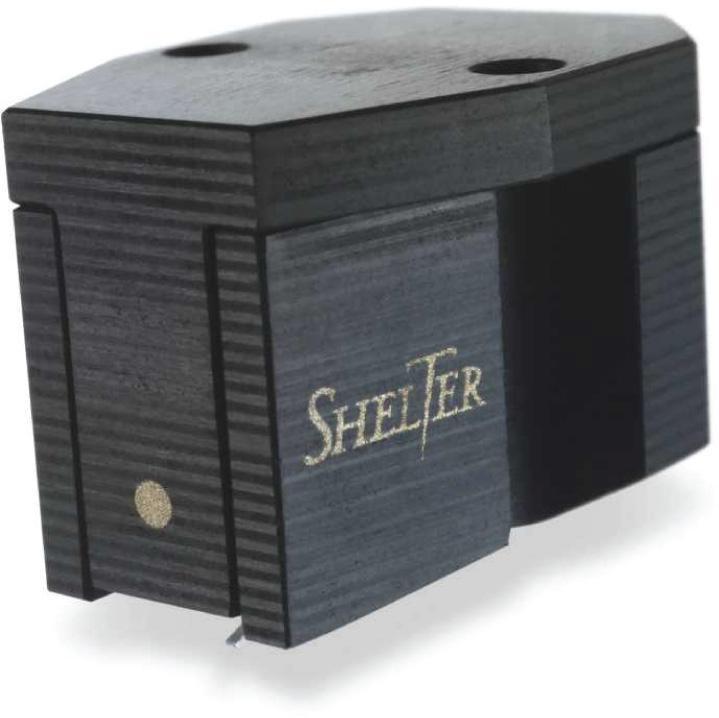
The Harmony’s attraction to minor detail doesn’t preclude it from also turning heads when it comes to bass. Its low-end performance is prodigious, with magnificent weight, depth and impact when required. Bass detail was also highly impressive, the cartridge keeping basslines firmly in the picture at all times.
EQUAL WEIGHT
Grischka Zepf’s bass playing is a standout feature on Chris Jones’ ‘No Sanctuary Here’ from the Stockfisch Records Vinyl Collection [Stockfisch SFR 357.8006.1], but as Chris starts singing and the acoustic guitar and percussion enter the fray, it’s all too easy for these aspects to dominate. Yet the Harmony gave equal weight to everything and held the track together immaculately.
Given that this cartridge does indeed err towards the smooth side, there’s a concern over whether it can let its hair down and boogie when asked. Rest assured – it can rock out with the best of ’em, even though it doesn’t have the bright, forward nature that you might assume is necessary for a sound with palpable attack. Once again, the incredible detail that it unearths maintains this pick-up’s advantage.
‘I Want A Dog’, the second song on Pet Shop Boys’ Introspective LP [Parlophone PCS 7325], is a long way from being a subtle audiophile test track. With house DJ Frankie Knuckles in the producer’s chair, you might think it will sound its best on a Technics SL-1200/Stanton 500 combo. But just a few seconds listening to the Harmony strutting its stuff will disabuse anyone of that notion.
The cartridge’s inherent sophistication did slightly gloss over the last ounce of sheer snappy punch from the drum machine, but the rhythm of the track was taut, crisp and lithe. As to those rain effects at the beginning, you’ll be tempted to reach for an umbrella…
TRACK AND TRACE
At some point I thought I should try out Shelter’s ‘freebie’ carbon fibre disc. Fitted under my Gyro SE’s clamp there was, perhaps, the subtlest change in character and an extra slight sense of midband impact, particularly on material like the aforementioned Pet Shop Boys’ track. The effects were definitely not ‘night and day’ but will undoubtedly intrigue inveterate vinyl tweakers.
PM’s Lab Report [right] confirms the Harmony’s tracking prowess while the tracing accuracy of that line contact stylus worked like a charm in capturing every nuance of treble detail buried within the grooves. Soft cymbals stayed vivid within the space of each recording, and instruments sounded lifelike. Henry Solomon’s saxophone on Haim’s ‘Summer Girl’, from their Women In Music Part III LP [Polydor 0813817], had a delicious metallic rasp to it while Este Haim’s upright bass performance stayed strong.
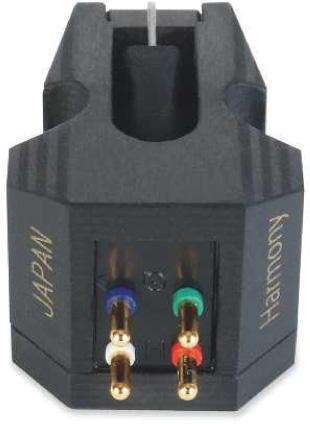
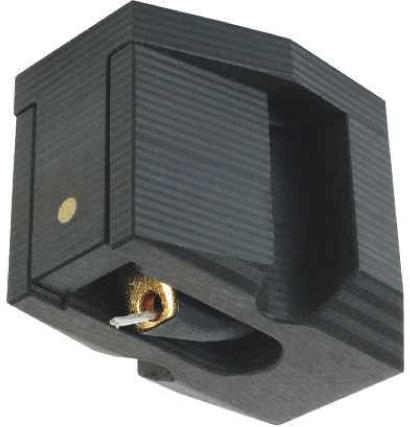
And the Harmony comes into its own when reproducing stringed instruments, so those basses and acoustic guitars possessed a precision and stark clarity that ensured the colour of every note was distinct. More remarkable was the harp on ‘Credo Of Ballymacoda’ [Windham Hill Sampler ’89; Windham Hill 371082-1]. Not only did it appear to be positioned in the middle of my room, but the sound of hand movements and ‘squeaks’ from the strings was effortlessly natural.
LAB REPORT
SHELTER HARMONY
As Shelter’s flagship moving-coil, the Harmony successfully builds upon the already very fine performance achieved by the now-discontinued Model 9000 [HFN Feb ’19] from the brand’s ‘Legendary’ MC pick-up range. The ’9000 was a particularly impressive tracker and the Harmony follows suit despite its lower (stiffer) 11cu compliance, though I would certainly err on the upper end of its 1.4-2.2g recommended downforce and partner it with a mid/heavy effective mass tonearm. Tested at 2.0g the Harmony tracked up to the maximum 80μm groove pitch, clearing the +15dB test (315Hz lateral cut, re. 11.2μm) at 0.3% THD and +18dB at ~2% THD. Importantly, the Harmony’s equalised distortion shows good symmetry between lateral/vertical cuts [black/red traces, respectively, Graph 2] and resolves to <1% THD up to 2.5kHz and <3% below 6kHz for stereo cuts [re. –8dB re. 5cm/sec; dashed trace, Graph 2].
Shelter offers a limited specification for the Harmony but its rated 0.5mV output was more than met at 585μV (re. 1kHz at 5cm/sec into 100ohm) together with a phenomenally tight 0.05dB channel balance – the Harmony will work well into phono stages offering ~65dB gain. The Harmony’s frequency response is usefully extended [see boxout, p69] albeit with a mild +1.1dB peak at 18kHz and 0.5dB depression through upper bass/lower mid [see Graph 1, below]. The reduced high treble emphasis with vertical cuts [red trace, Graph 1] suggests some diminished brilliance at the edges of the soundstage, but it’s also less sensitive to surface noise here. Finally, as the Harmony’s VTA is slightly high at 28o, some adjustment of rear arm height might be useful in tweaking its tonal balance. PM
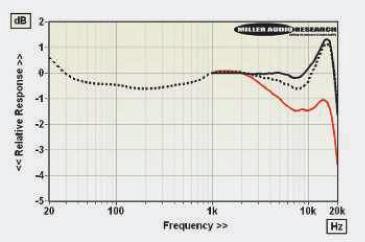
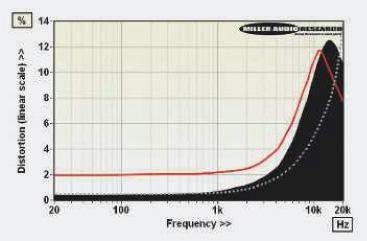
HI-FI NEWS SPECIFICATIONS
Generator type/weight Moving-coil / 8.5g
Recommended tracking force 14-22mN (2.0mN)
Sensitivity/balance (re. 5cm/sec) 585μV / 0.05dB
Compliance (vertical/lateral) 11cu / 12cu
Vertical tracking angle 28 degrees
L/R Tracking ability 80μm / 80μm
L/R Distortion (–8dB, 20Hz-20kHz) 1.1–18% / 0.55–14%
L/R Frequency resp. (20Hz-20kHz) +0.05 to –1.3dB / +1.2 to –1.45dB
Stereo separation (1kHz / 20kHz) 26dB / 19dB
VERDICT
With an uncanny ability to bring the best from almost any genre of music that passes under its stylus, the Harmony MC is a fitting flagship for Shelter’s family of cartridges. It’s both gloriously and introspectively detailed, yet pulls performances together with an all-encompassing harmony that’s seldom experienced at any price. Those seeking analogue ‘shelter’ in an increasingly digital world will surely love it.


